
History
IS IMPORTANT
Explore
Search for a specific event or composer, or view all events from a season using the dropdown menu.
SEASON
- 2008 June
- 2009 June
- 2010 June
- 2011 June
- 2012 January
- 2012 June
- 2013 January
- 2013 June
- 2014 January
- 2014 June
- 2015 January
- 2015 June
- 2016 December
- 2016 January
- 2016 June
- 2017 January
- 2017 June
- 2017 March
- 2018 January
- 2018 June
- 2019 January
- 2019 June
- 2020 January
- 2021 June
- 2022 January
- 2022 June
- 2023 January
- 2023 June
- 2024 January
- 2024 June
- 2025 August
- 2025 January
- 2025 June

Tasting Music 4: Franck Sonata in A Major
It began as a wedding present, but would prove to be a gift to the music world that keeps on giving. The Franck Sonata, as it is known, defies categorization. Yes, it is 100% and inalienably a piece for violin and piano. Let’s be clear about that from the get-go. But there is something so universal in its DNA that every instrument wants a crack at it.
The number of arrangements is staggering. There are versions for: flute, cello, viola, double bass, oboe, clarinet, alto saxophone, tuba, violin and string orchestra, violin and full orchestra, two pianos and believe it or not, choir and organ. Of those myriad incarnations, the only extra version sanctioned by the composer is the one for cello and piano.
About that wedding. Franck composed the work for the young virtuoso Eugène Ysaÿe and his bride Louise Bourdeau de Courtrai. Ysaÿe played the sonata that very day for his guests. He would give the public premiere of the work a couple of months later, and it has taken on a life of its own ever since.
César Franck (1822-1890)
Sonata for Violin and Piano in A Major (1868)
I. Allegretto ben moderato
II. Allegro
III. Recitativo-Fantasia. Ben moderato — Molto lento
IV. Allegretto poco mosso
Artists: Winston Choi, piano; Maria Sampen, violin

Tasting Music 3: Verklärte Nacht
A man and a woman walk side by side in a cold, moonlit forest. There are no clouds to obscure the light above. After a time, the woman speaks, telling her companion that she is pregnant, and not by him.
Is this a trailer for the latest gripping, prestige TV drama on your favorite streaming service? No. It is the subject of Arnold Schoenberg’s chamber tone poem Verklärte Nacht. This sonic journey ravishes, transforming player and listener alike, even as the characters walking through the cold forest are transformed. In Verklärte Nacht, we encounter the apex of post-Romantic expression, fittingly penned at the dawn of a new century.
(Note to self… develop TV show based on Dehmel/Schoenberg’s Transfigured Night.)
Arnold Schoenberg (1874-1951)
Verklärte Nacht (Transfigured Night), Op. 4 (1899)
For string sextet
Artists: Timothy Christie, viola; Mara Gearman, viola; David Requiro, cello; Svend Rønning, violin; Maria Sampen, violin; Meta Weiss, cello
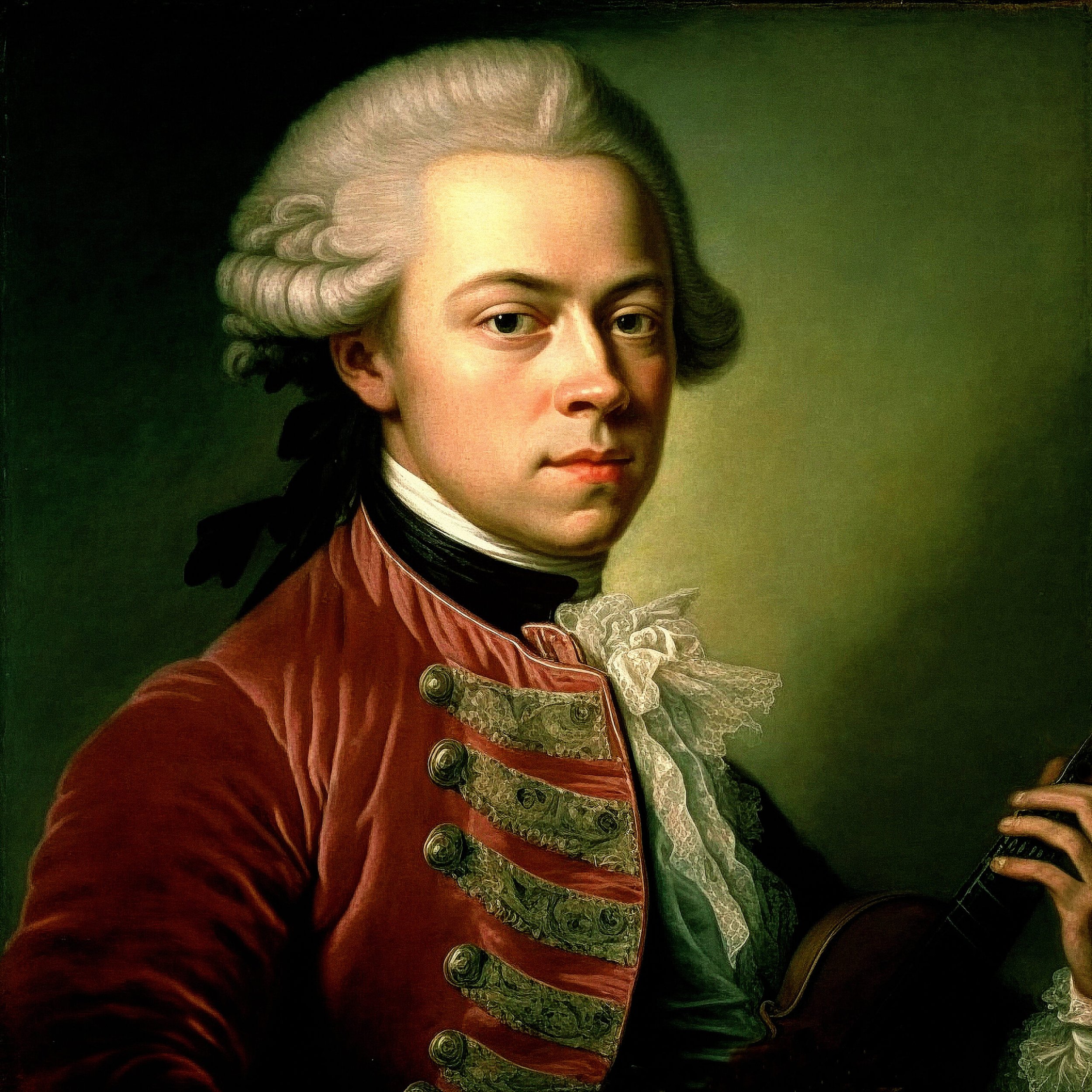
Tasting Music 2: Mozart Piano Quartet in G minor, K. 478
Survey the entire catalog of Mozart’s music (side note: that ‘K’ you always see after the title of a piece by Mozart refers to the catalog) and you will find very few pieces designated in a minor key. Therefore, the music by Mozart framed in a minor key takes on special meaning by dint of its relative scarcity. And when it comes to minor keys, G minor makes a strong case for Mozart’s favorite. Think of the stormy beginning of his Symphony No. 25, which opens the film Amadeus. The first few measures of his Symphony No. 40 have disrupted concerts innumerable as a cellphone ringtone. And in his chamber output, the late String Quintet in G minor spins to epic proportions.
Here, Mozart begins with a forceful rhythmic unison one would be forgiven for attributing to Beethoven. Perhaps young Beethoven was listening. Yet, as forceful as the opening motif is, you know Mozart liked a good party. And the clouds rarely hang about Mozart very long. We’ll chase them away together at Pepper Bridge Winery.
Wolfgang Amadeus Mozart (1756-1791)
Piano Quartet in G minor, K. 478 (1785)
I. Allegro
II. Andante
III. Rondo
Artists: Timothy Christie, viola; Norbert Lewandowski, cello; Ronaldo Rolim, piano; Maria Sampen, violin

Tasting Music 1: Shostakovich Piano Quintet
Dmitri Shostakovich composed and performed music under an oppressive Soviet regime that demanded its artists toe the official party line under any and all circumstances. Artists who were perceived to stray from the party line tended to disappear. And it is well documented— including on Festivals such as this one— that the music of Shostakovich is invariably tied to the idea of dissent. He needled, parodied, advocated, wept and fake-laughed, all under the guise of doing his Soviet best. The Piano Quintet in G minor is no exception… except in the way that it is an exception. For this piece, Shostakovich won the inaugural Stalin Prize, First-Class, and was awarded 100,000 rubles cash money. Rubles-Schmoobles you say? In 1941, 100,000 RUB equaled 20,000 USD. $20,000 in 1941 equals about $427,557 today.
It goes without saying that you will want to join us at Foundry Vineyards to see and hear what all the fuss is about! And a ticket is just $25. That’s 2,100 RUB if you’re curious. And we do not accept them.
Dmitri Shostakovich (1906-1975)
Piano Quintet in G minor, Op. 57
I. Prelude: Lento
II. Fugue: Adagio
III. Scherzo: Allegretto
IV. Intermezzo: Lento
V. Finale: Allegretto
Artists: Timothy Christie, viola; Conor Hanick, piano; Norbert Lewandowski, cello; Stephen Miahky, violin; Philip Payton, violin
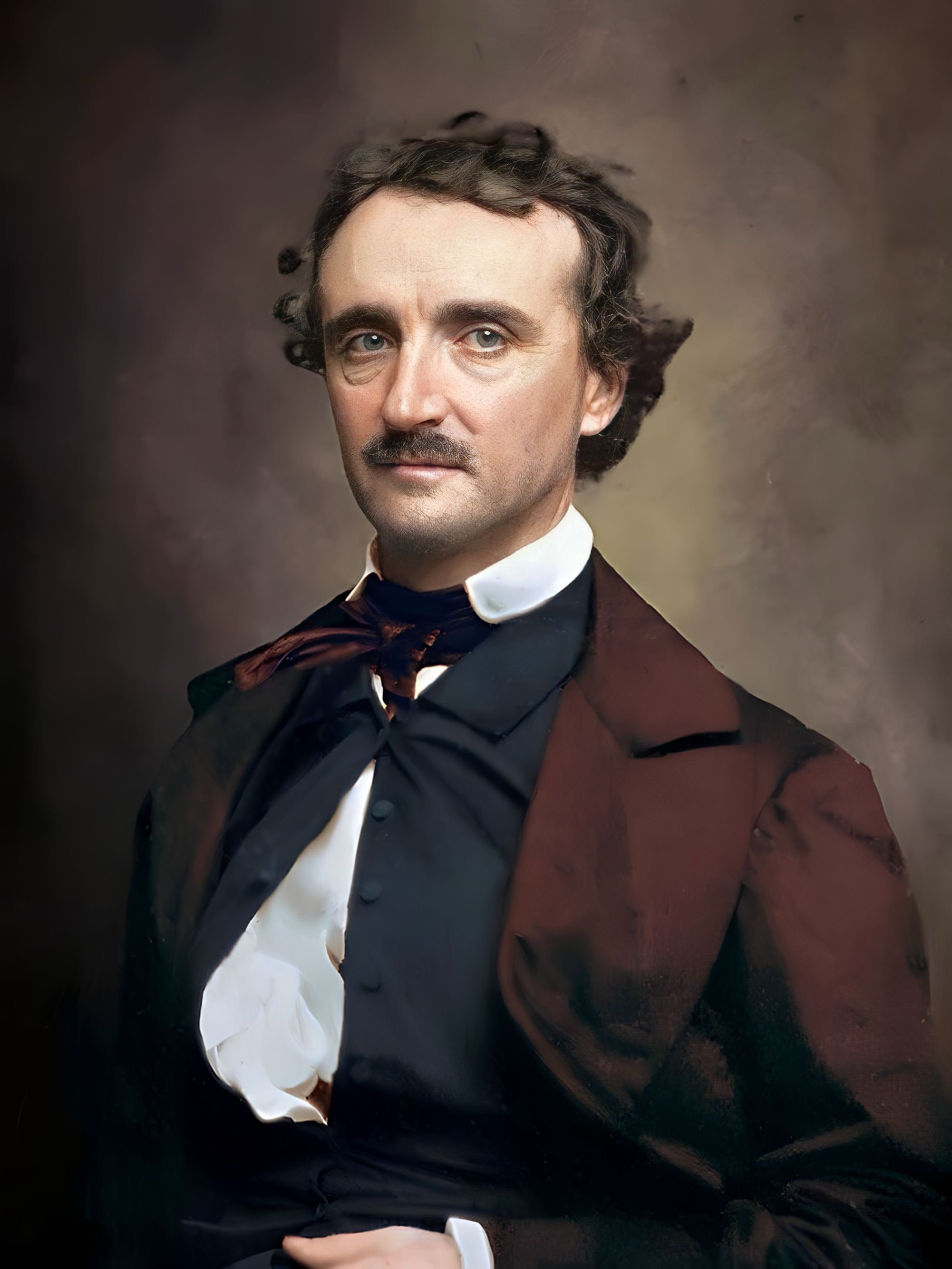
Tasting Music — Edgar Allen Whoa!
André Caplet (1878-1925)
Conte Fantastique d’après La Masque de la Mort Rouge
For harp and string quartet
“There were much glare and glitter and piquancy and phantasm…”
“Merci, Edgar!” said French composer, André Caplet, upon reading the words above from Poe’s Masque of the Red Death. Maybe he said that, maybe he didn’t. Doesn’t matter! These are the qualities Caplet brings to life in his work for harp and string quartet, Conte Fantastique d’après La Masque de la Mort Rouge (1924). Glare. Glitter. Piquancy. Phantasm.
A pandemic rages. An eccentric aristocrat invites hundreds of nobles to ride out the storm in his castle, enjoying opulent parties and masked balls. There are seven chambers, each decorated to the point of embodiment of a different color: Blue, Purple, Green, Orange, White, Violet and Black. In the outer rooms, the vibe is light and merry. As the action progresses deeper into the castle, things take a decidedly morbid turn. Vincent Price makes a cameo (I think).
Are you intrigued? We visit Echolands Winery for this performance sure to echo in the annals of WWCMF lore for years to come.
Artists: Timothy Christie, viola; Elizabeth Landis, harp; Vanessa Moss, violin; Maria Sampen, violin; Sally Singer Tuttle, cello

Tasting Music 4 — Amy Beach
Tonight’s performance has been made possible by the generosity of Michael Haight and Cathy Lee-Haight.
Born in New Hampshire in 1867, Amy Marcy Cheney, displayed musical gifts almost from the start. She first studied piano with her mother, then with two prominent German expats in Boston, eventually adding courses in counterpoint with a German-trained Bostonian. She established herself as a concert soloist, performing with the most esteemed arts organizations in the US, notably the Boston Symphony.
At the age of 18, Amy married Dr. Henry Harris Aubrey Beach, a 42-year old surgeon. Much about this union seems strange to our modern sensibilities, perhaps nowhere more so than in the prenuptial agreement curtailing Amy’s musical activities, limiting her public piano performances to two per year, and then only for charity. But composition was deemed a suitable pursuit for a married woman, and Mrs. Henry Harris Aubrey Beach would compose and publish musical works throughout her self-reported happy marriage, and continue to do so under the same name long after Henry’s passing in 1910.
And yet, and I say this objectively, Amy was a far superior musician than Henry was a surgeon! While he poked about with blunt instruments of the Civil War era, she performed Chopin, Liszt, Beethoven and Bach to international acclaim, and became the first American woman to compose and publish a symphony (E minor, The Gaelic, Op. 32), a work which received rave reviews in the US and Europe, a coup for any American composer, let alone a woman. Henry may still have been using leeches.
Tonight, we perform the lyrical masterpiece, the Piano Quintet in F# minor, Op. 67, by Amy Beach, as she is now known.
Amy Beach (1867-1944)
Piano Quintet in F# minor, Op. 67 (1907)
I. Adagio - Allegro moderato
II. Adagio espressivo
III. Allegro agitato - Adagio come prima - Presto
Artists: Winston Choi, piano; Timothy Christie, viola; Norbert Lewandowski, cello; Maria Sampen, violin; MingHuan Xu, violin
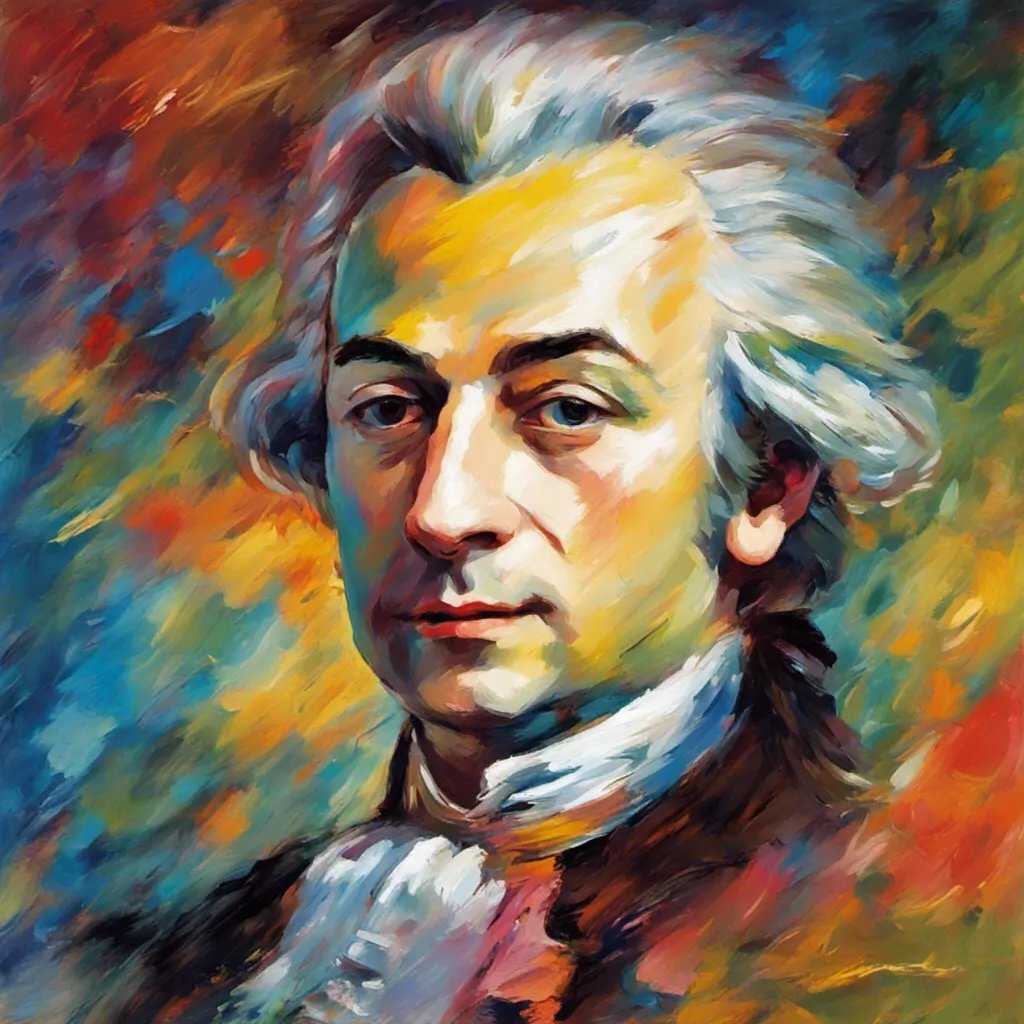
Tasting Music 3 — Mozart
Tonight’s performance has been made possible by the generosity of an anonymous donor in memory of Tim Brown — gentle soul, enquiring mind, devoted to chamber music.
Tonight’s Tasting Music performance features one of Mozart’s great chamber works. The legacy of this work is not just the invention of a musical form, the clarinet quintet, but perhaps the establishment of the clarinet itself as an indispensable part of the corps of classical instruments. The sonority of late Mozart leans into the clarinet, even displacing the more standard pair of oboes in the orchestra of the time. And behind this epiphany on Mozart’s part was one man, Anton Stadler. Stadler was a virtuoso of the instrument whose playing inspired Mozart to compose both this quintet and ultimately his final completed work, the Clarinet Concerto, K. 622. Oh, and that famous incomplete final piece? The Requiem is scored for two clarinets and no oboes. OK, ok… you know your history. Technically, the clarinets of the Concerto and the Requiem are basset horns, a variant of the clarinet with access to additional low notes. But it was Stadler who figured prominently in the invention and perfection of the basset horn, too. Tonight, our Stadler is named Schempf.
Wolfgang Amadeus Mozart (1765-1791)
Quintet in A for Clarinet and Strings, K. 581
I. Allegro
II. Larghetto
III. Menuetto
IV. Allegretto con variazioni
Artists: Timothy Christie, viola; Norbert Lewandowski, cello; Vanessa Moss, violin; Maria Sampen, violin; Kevin Schempf, clarinet
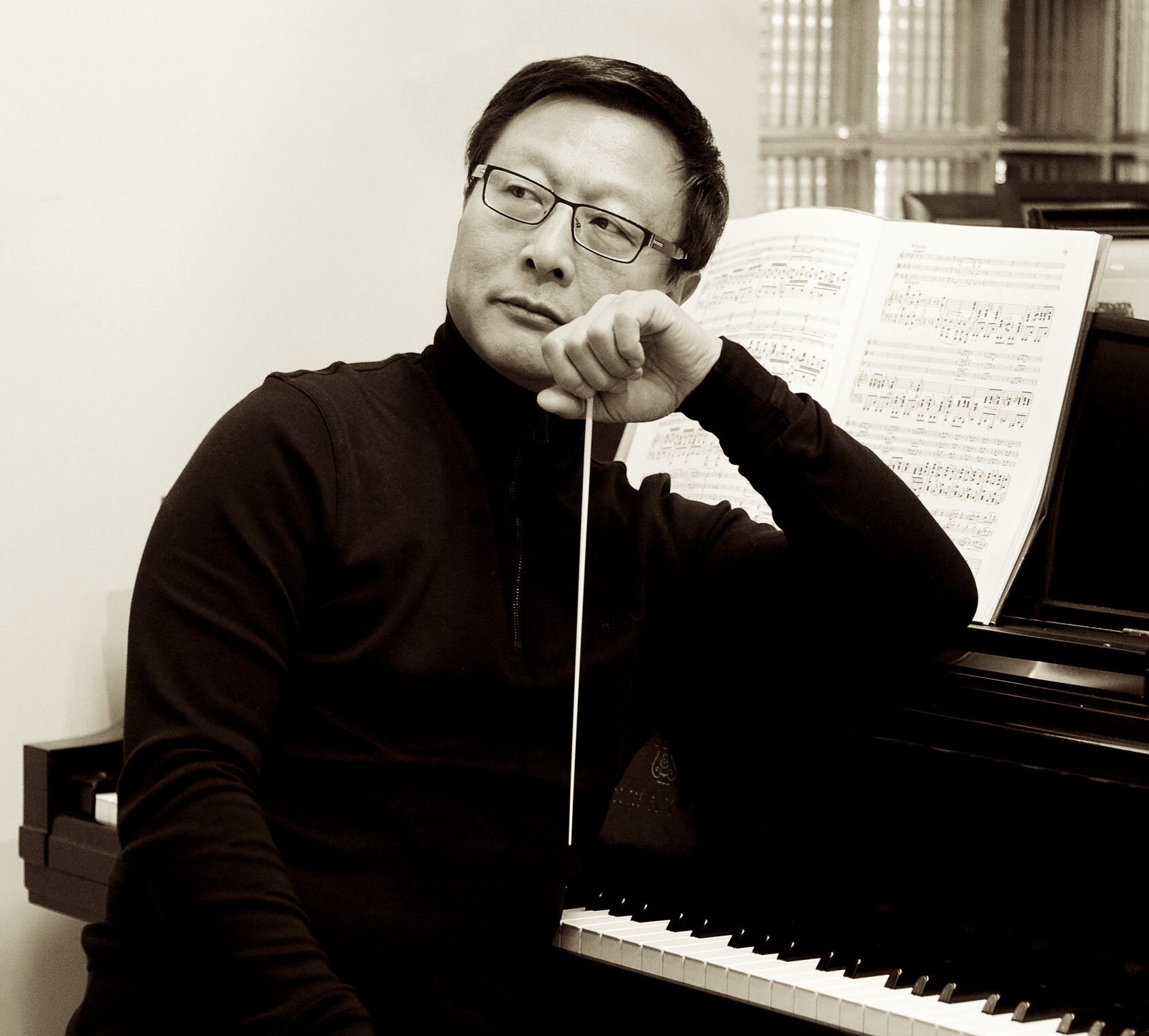
Tasting Music 2 — Love Songs
Tonight’s performance has been made possible by the generosity of Beth Barbre and John Mangan.
All humans the world over have two things in common. We share both the capacity to suffer and the right to be happy. Nowhere are these two states more perfectly encapsulated than in the Love Song.
In Verdi’s La Traviata, Violetta and Alfredo sing a great duet. He sings about his love for her, “the torment and delight of his heart.” He feels suffering and happiness simultaneously. She sings back that she just wants to be friends. Of course, she’s in love with him, too, but she is from a lower class. Turns out Alfredo’s meddling father— who just loves his son, and wants his daughter to have prospects— has coerced Violetta into professing a false sentiment. The lovers just want to be happy, but they suffer instead. By the time everyone comes around (and back onstage), convinced of and happy in the purity and goodness of the love between Violetta and Alfredo, Violetta’s pesky tuberculosis flares up one final time, bringing the whole affair to a tragic conclusion, brief happiness supplanted by ultimate suffering.
In a nutshell.
And that is what a Love Song is, the human condition of suffering and happiness in a nutshell. Of course, we are not an opera festival, but a chamber music festival. Therefore, we look to smaller forms, in this case, love songs in Chinese and Spanish by Bright Sheng and Joaquin Turina.
Artists: Brittany Boulding Breeden, violin; Timothy Christie, viola; Katri Ervamaa, cello; Jennifer Goltz-Taylor, soprano; Ronaldo Rolim, piano; Maria Sampen, violin; Xiaohui Yang, piano

Tasting Music 1 — Brahms
Tonight’s performance has been made possible by the generosity of Iain and Stephanida Christie.
Form is funny. It tells us the shape of thing, and on first glance might seem like a limitation. But when we look at poetry, from the ephemeral haiku to the workaday limerick (Nantucket aside) to the ever tightening restrictions of the sestina, sonnet or pantoum, form itself seems to unlock boundless creativity. Form gives art a sense of timelessness, permanence and purpose. Tonight we explore three ‘first movements’ by Brahms, all for the same pair of instruments, all cast in the same form. If “beauty is truth, truth beauty,” form is the Urn itself, practically speaking. Though, to quibble with Keats on one point, “Heard melodies are sweet, but those unheard/ Are sweeter…” Not tonight! Lastly, enjoy wines from Reininger, available by the urn or cup, poetically speaking.
Johnannes Brahms (1833-1897)
Sonata No. 3 for Violin and Piano in D minor, Op. 108
I. Allegro
Sonata No. 2 for Violin and Piano in A, Op. 100
I. Allegro amabile
Sonata No. 1 for Violin and Piano in G, Op. 78
I. Vivace, ma non troppo
Artists: Timothy Christie, violin; Henry Kramer, piano; Stephen Miahky, violin; Philip Payton, violin; Maria Sampen, violin
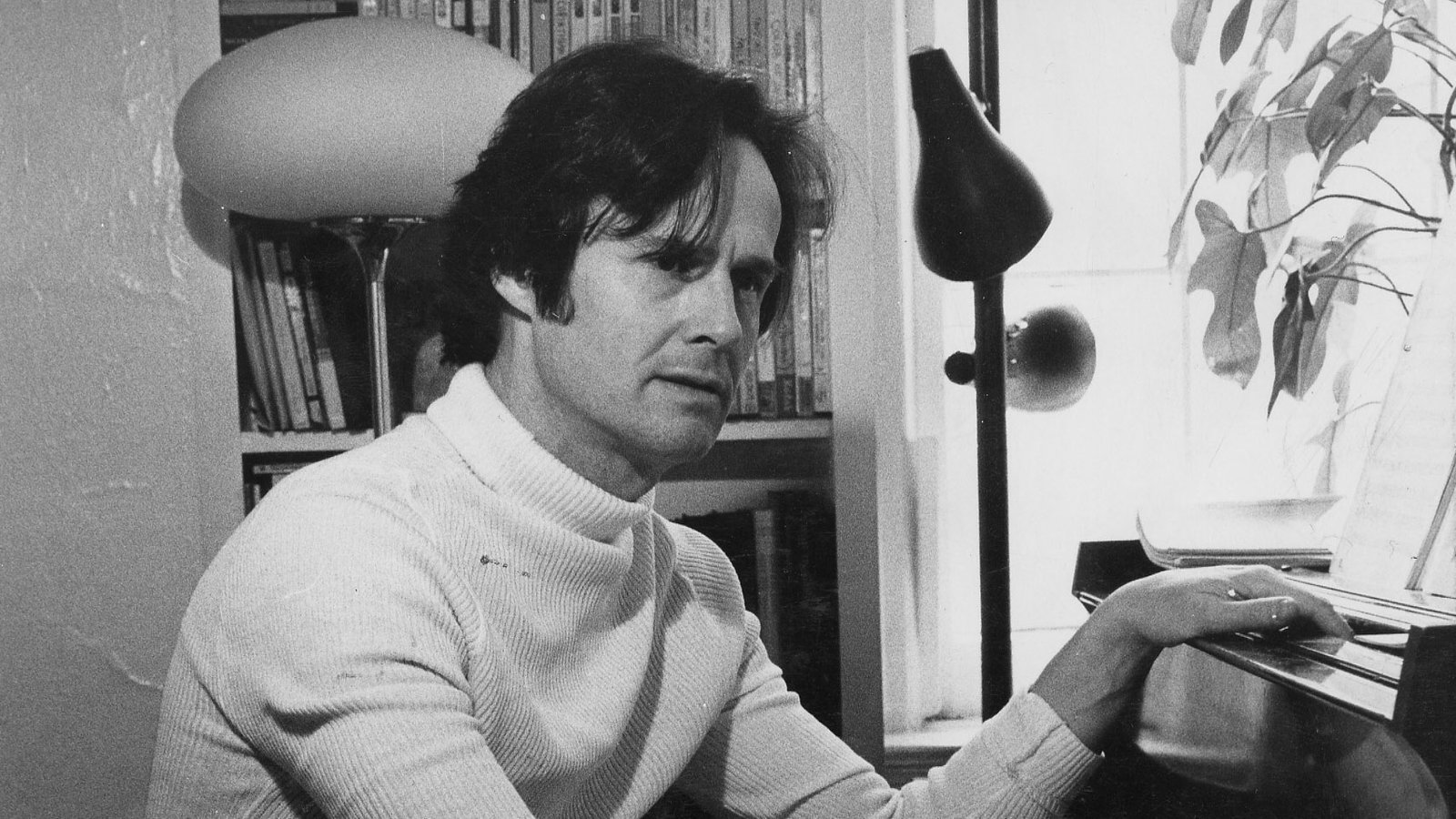
Tasting Music — Rorem String Quartet No. 4
Featuring the Girsky String Quartet and images by Pablo Picasso
The Arts, capital ‘A.’ In our line of work, we refer to this broad category early and often. If a STEM curriculum is good, a STEAM one is better (this is a fact!). But chamber music itself occupies a rather specific corner of the Arts. We favor small rooms, small combinations of instruments, and perhaps go so far to consider our music ‘absolute,’ i.e., having no specific meaning other than sound itself. The listener can make of it what they will. Performers, too.
But what happens when chamber music emerges from its corner into the Arts more broadly. The 4th String Quartet of American composer Ned Rorem presents a fascinating opportunity to explore whether or not a piece of chamber music is necessarily absolute. Initially, Rorem based each of the 10 movements of this quartet on a different work by Picasso, and gave each movement the title of the painting or drawing that inspired it. Within a few years of the premiere, however, Rorem became dissatisfied with the idea of his music being perceived as representational, and he removed the titles from the movements. The third movement, originally titled Acrobat on a Ball, became ‘III: Very fast’— English for ‘III: Allegro molto,’ a tempo indication common to canonical classical works, at once specific and vague, therefore versatile, and ultimately “meaningless.”
What to do. Honor the original intention, and include the Picasso titles? Or honor the later revision and suppress them? Because you deserve a full festival experience we’ll do both. And we’ll even show the Picasso drawings and paintings at the center of all the fuss. We’ll have you guessing “was that the Minotaur or the Basket of Flowers? The Head of a Boy or the Death of a Harlequin?” Or was it simply, Very fast? The answer to all of these questions is unequivocally, ‘Yes!’ Helping us engage all your senses is The Walls Winery, whose selection of wines will make sure your senses of taste and smell don’t feel left out.
Ned Rorem (1923-2022)
String Quartet No. 4 (1994)
I. Minotaur
II. Child Holding a Dove
III. Acrobat on a Ball
IV. Still Life
V. Seated Harlequin
VI. Head of a Boy
VII. Basket of Flowers
VIII. Self Portrait
IX. Three Nudes
X. Death of a Harlequin
Artists: Girsky String Quartet — Natasha Bazhanov, violin; Timothy Christie, viola & moderator; Artur Girsky, violin; Rowena Hammill, cello
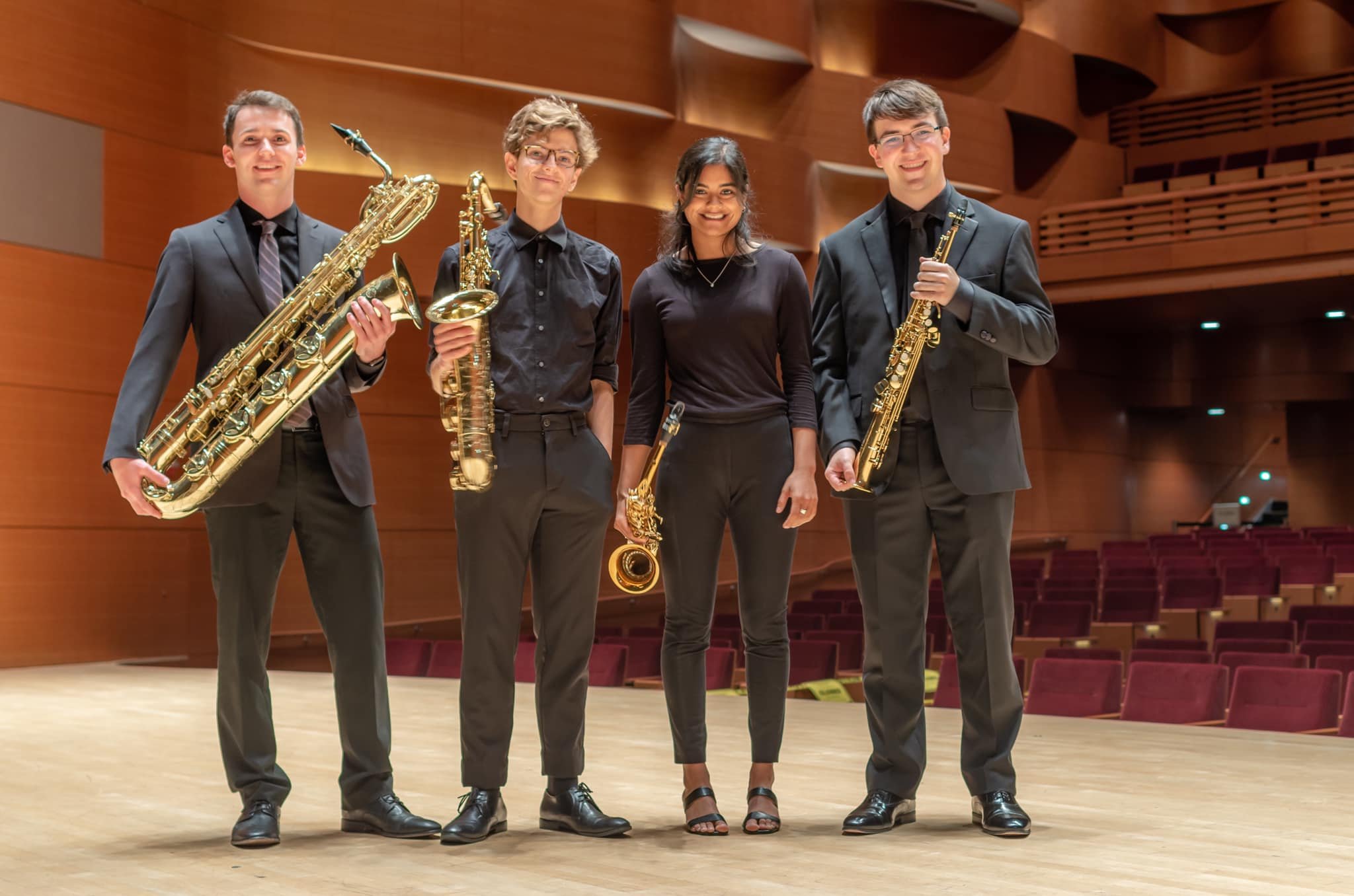
June 2023: Tasting Music 3 — Emerging Artist Quartet Fellows, masso
This event has been made possible by the generosity of Cecile & Rick Ervin.
There is such a thing as the perfect chamber ensemble. It is balanced, unified in expression and awash in a vast array of musical colors. The string quartet? No siree! I am talking about the saxophone quartet. Only once before has the saxophone quartet made an appearance on the WWCMF stage. This is by design, an effort to mitigate jealousy among the practitioners of all the other instruments. But we must from time to time open the Pulp Fiction briefcase and gaze at the beauty within.
masso, the Chicago-based saxophone quartet, make their WWCMF debut as the 2nd annual Emerging Artist Quartet Fellows. During their residency in Walla Walla, masso has been hard at work presenting community outreach performances in English and Spanish around the Walla Walla Valley.
Their work in the community during the festival has been made possible by a generous grant from the Wildhorse Foundation.
Artists: masso: Sam Alvarez, tenor saxophone; Isaac Boone, baritone saxophone; Kurt Cox, soprano saxophone; Ila Gupta, alto saxophone

June 2023: Tasting Music 2 — Arensky String Quartet in A minor
This event is made possible by the generosity of Iain & Stephanida Christie.
The greats don’t ask permission. Sure, a string quartet has and will always have two violins, a viola and a cello— it’s the Reese’s Peanut Butter Cup of chamber groups, perfectly balanced. But when the musical idea is clearly formed, the great artist breaks rules with abandon. Hence, Anton Arensky, protégé of Tchaikovsky, decided to turn the string quartet upside down using the formation of one violin, one viola and two cellos. Yup, dark chocolate. (To spend a moment longer with this analogy, viola is therefore the peanut butter, which feels right.)
The Quartet in A minor is a tribute to Tchaikovsky, composed in memoriam. Russian Orthodox plainchant informs the sound world, the richness of two cellos providing gravitas. However, there are fireworks galore, and ultimately this work is more an uplifting celebration of life rather than a lamentation of life lost.
Anton Arensky (1861-1906)
String Quartet No. 2 in A minor (1894)
I. Moderato
II. Variations sur un thême de P. Tschaikowsky. Moderato
III. Finale. Andante sostenuto
Artists: Timothy Christie, viola; Rowena Hammill, cello; Norbert Lewandowski, cello; Stephen Miahky, violin

June 2023: Tasting Music 1 — Brahms Piano Trio in C, Op. 87
This event is made possible by the generosity of Jim & Jo Ann Clapp.
When Brahms composed his Piano Trio No. 1 in B (Op. 8) in 1854, he was a clean-shaven, dashing young Romantic of 21. He completed his Piano Trio No. 2 in C (Op. 87) in 1882 sporting a 10” beard and a certain gravitas, aged 49. The two trios are a half-step and a world apart. B major’s key signature has 5 sharps. C major’s has 0 sharps (or flats). B major uses all of the black keys on a piano, C major only the white ones. One can infer, therefore, an inverse relationship between beard length and number of black piano keys used. What a difference a half-step makes. Like a good story, only some of this is true. Join the Volta Piano Trio and WWCMF Founder & Artistic Director Timothy Christie to separate fact from fiction, good information from bad, and discover the treasures within this extraordinary work by Brahms.
Johannes Brahms (1833-1897)
Piano Trio No. 2 in C, Op. 87
I. Allegro
II. Andante con moto
III. Scherzo. Presto — Poco meno presto
IV. Finale. Allegro giocoso
Artists: Volta Piano Trio: Jennifer Caine Provine, violin; Oksana Ejokina, piano; Sally Singer Tuttle, cello; Timothy Christie, moderator
